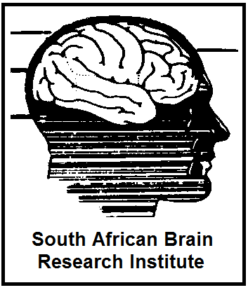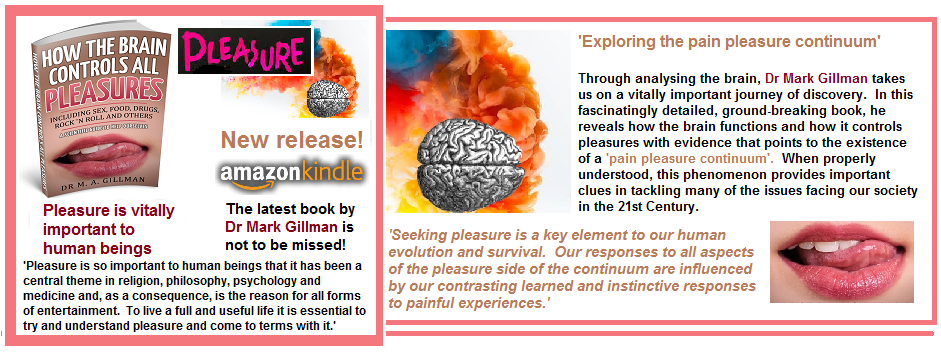Click here to get your copy of the latest book by Dr Mark Gillman!
https://www.amazon.com/dp/B07B21J7JW
May I have this dance? – music and dance as abstract pleasures and the effects of music on the brain
How does music affect the brain?Music, dance and the use of our aesthetic sense are very pleasurable and rewarding human activities. Furthermore, as Darwin noted in his book ‘The Descent of Man’ music and dance, as sources of enjoyment, have significance across all human cultures, from the more civilised to the most primitive. Consequently, the origins of both are shrouded in our ancient prehistoric past. For example, Palaeolithic rock-art, which mainly comes from the Upper Palaeolithic (40,000 to 50,000 years from the present time) seems to have ritualistic significance.
Nonetheless, our early ancestors could not have contributed such strikingly beautiful art without possessing advanced aesthetic sensibilities. If, as seems possible, the Berekhat Ram figurine is a form of primitive sculpture, this would push an example of early human art to the Lower Palaeolithic age (between 2.5 million and 200, 000 years ago). Yet, at first glance, music, dance and aesthetic sensibility do not seem comparable with the other pleasure generating biological activities.
Unlike music, dance and aesthetic pleasure; the other re-enforcing behaviours associated with pleasure such as sexual desire and hunger have obvious survival benefits. Music, dance and aesthetics are somewhat abstract pleasures that do not seem to have obvious survival benefits. As a result, I have covered our study of these pleasures in the final chapter which deals with normal pleasure states.
The mysterious power of music
Oliver Sacks, in his book Musicophilia, refers to Schopenhauer and Nietzsche. Both recognised the mysterious power of music. Schopenhauer noted that music produces deep emotions, but unlike the emotions of real life, the emotions produced by music are somewhat divorced from the real life context. He also held that musical emotions are not linked to the phenomena which engender emotions in daily life e.g. grief following the loss of a close relative or friend.
Music may act as a bridge between the mental and physical worlds
In contrast, and perhaps paradoxically, Nietzsche understood the close association of music with our physical beings. He wrote that we listen to music with our physical bodies and keep time with the rhythm and often change our facial expression and posture in response to the music. Clearly, Nietzsche’s view has a factual basis, as can be verified by anybody attending a classical concert (where the beat is not as heavily emphasised) as compared to a pop concert (where it can be almost all pervasive). Those at a classical concert frequently tap out the musical beat, often unconsciously. Thus, music seems to lie somewhere in the limbo between the physical and mental worlds and may act as a bridge.
Most drive states causing pleasure require discrete and significant physical changes within the internal and external physical environment. The initial change might arise within the internal milieu, which then provokes a physical action to satisfy that drive which in turn produces anticipatory and consummatory pleasure. When there is a fall in glucose concentration in our blood, the brain registers the change and we feel the need to eat. Once we have decided to eat we experience anticipatory pleasure during the period before the act of eating, which is then followed by the act of eating that results in the consummatory pleasure.
Music to my ears
As mentioned, music and certainly aesthetic sensibilities too, seem to be in limbo; in the sense that they are largely passive phenomena, although capable of producing sensations of pleasure. Of course, we perceive music when pressure changes take place in the physical environment, which then impinge on our eardrums, thus producing sound.
We perceive aesthetic pleasure through hearing or via our visual senses or a combination of both. But, unlike all other pleasures, music has no strong and overt physical result apart from pleasure, unless one regards dancing as the physical outcome of music. And aesthetic pleasure may require even less physical stimulus, apart from screening and seeing. Indeed, pleasure from music and beauty are often derived from quiet contemplation without the need for any actual physical action apart from the physical process of listening or observing. We are thus left with a conundrum: what evolutionary purpose did music, dance and aesthetic sensibility serve?
The evolution of music, dance and aesthetic pleasure
There is little doubt that music and dancing are as ancient as the dawn of mankind and as such are represented in prehistoric rock-art. Physical movement obviously predated the advent of man, music or dancing.
According to fossil evidence, we developed the ability to walk upright approximately 4.5 million years ago. Clearly, progression from four to two feet was a major evolutionary advance and resulted in many identifiable modifications to our limbs. Notwithstanding, in researching the evolution of the brain, certain scientists have suggested that walking may have had a very important part in the development of our large complex human brain.
Our more complex and developed brain has moved from a predominantly straight-line relationship with the spine, as found in less evolved mammals, to a perpendicular relationship. Once walking became our most common form of mobility, running also developed. Running seems to have evolved to enable escape from predators or for capturing animal prey. Sometime later, our early ancestors developed endurance running which was used for persistence hunting to follow prey for extended periods.
Even today, a number of Kalahari San still pursue animals for hours on end before the animals are finally killed for the pot. As running became more familiar, it may have also been used to increase the speed of communication between individuals and their social groups. It may also have facilitated the development of dance. Over millennia, all these processes influenced the evolution of our brain from a small, relatively simple primate-like form to our large complex modern Homo sapiens brain.
Musical instruments such as bone flutes have been found that date back to approximately 40,000 years. Drums are commonly found in primitive societies and probably predated other instruments. Indeed, as we shall see, primates such as chimpanzees, bonobos and gorillas beat rhythmically on resonant objects.

